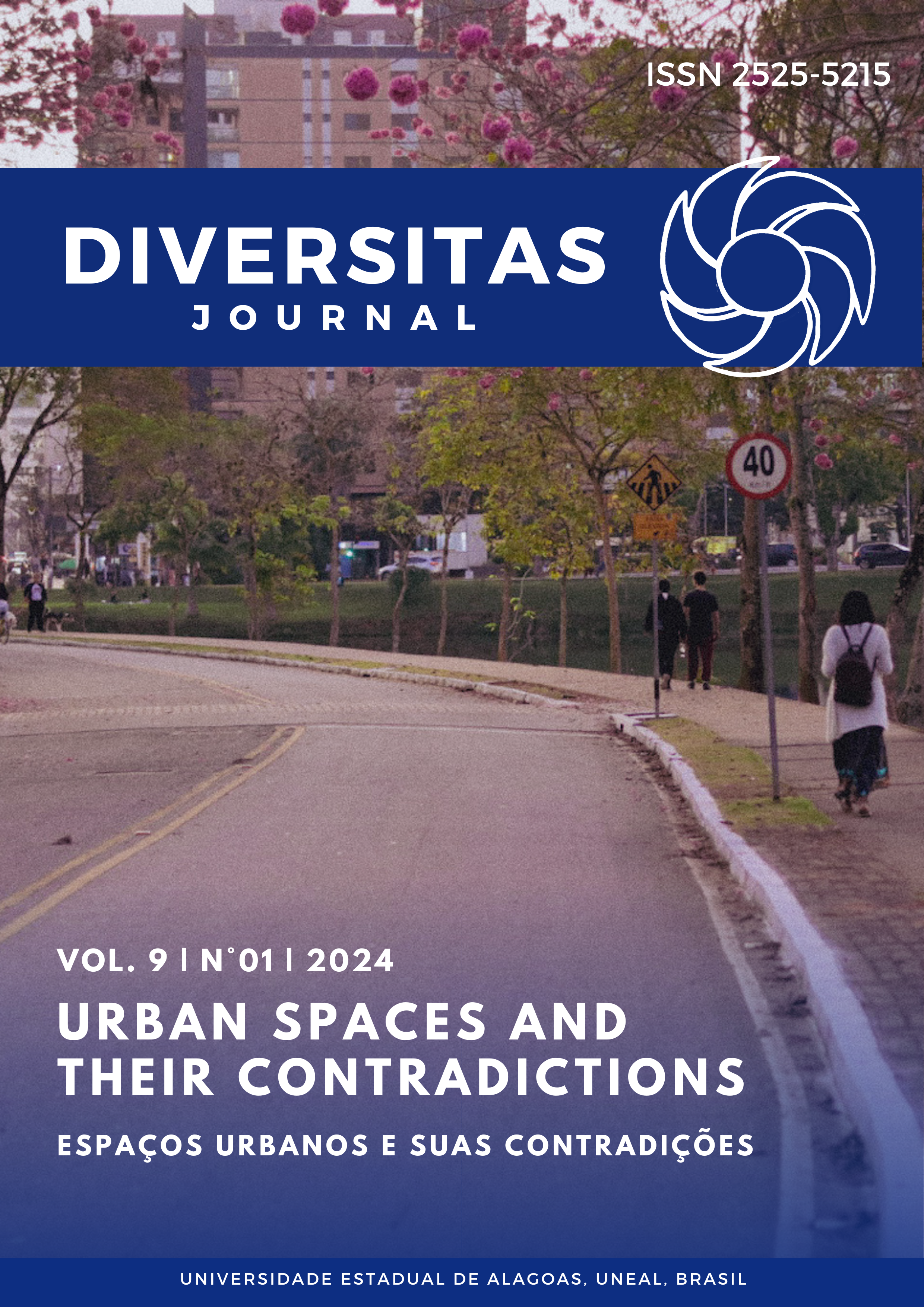Youth employment
A mato grosso study (2018-2019)
DOI:
https://doi.org/10.48017/dj.v9i1.2389Keywords:
Mato-Grosso, Young, Job MarketAbstract
This work aims to outline a profile of employment in the young age group (16 to 24 years old) in Mato Grosso and then compare it with the profiles of the macro-regions of the country, present in the work of Faro andFerrarini (2021). For this, data available from the National Household Sample Survey -continuous PNAD, for the biennium 2018-2019, was used as a source. After the characteristics defined for the profile related to young people from Mato Grosso, a brief summary of the results found by the authors of the work to be compared with the present study was presented. Among the results found for young people from Mato Grosso, it was observed that the average income of all sources of young employees is less than R$800, the average years of schooling are 11.5, and the number of men in the job market work is superior to that of young women, however, women lead in terms of occupying formal jobs and most of these young people declared themselves to be black or brown. The sector that most employs young people in commerce, however, as shown in the work by Faro and Ferrarini (2021), it is the activity that has the highest level of informality. This profile is similar to the results presented for the Midwest region.
Metrics
References
BARROS, R. P.; CAMARGO, J. M.; MENDONÇA, R. (1997). A estrutura do Desemprego no Brasil. IPEA, Texto para discussão n. 478, Rio de Janeiro.
FARO, K. C.; FERRARINI, A. (2021). Emprego Juvenil nas Grandes Regiões Brasileiras: comparativo da Reforma Trabalhista (2017) com base nos microdados trimestrais da PNAD. In: Anais do Encontro Nacional da ABET: Crises e horizontes do trabalho a partir da periferia. https//www.even3.com.br/anais/abet_trabalho2021/340914-EMPREGO-JUVENIL-NAS-GRANDES-REGIOES-BRASILEIRAS--COMPARATIVO-DA-REFORMA-TRABALHISTA-(2017) -COM-BASE-NOS-MICRODADO.
FERNANDES, R.; PICHETTI, P. (1999). Uma análise da estrutura do desemprego e da inatividade no Brasil metropolitano. Pesquisa e Planejamento Econômico, vol. 29, n. 1, Rio de janeiro, 1999.
FLORI, P. M. (2004). Desemprego de jovens: um estudo sobre a dinâmica do mercado de trabalho juvenil brasileiro. Biblioteca Digital USP, São Paulo, 2004.
GIL, A. C. (1994). Métodos e técnicas de pesquisa social. Atlas.GIL, A. C. (2010). Como elaborar projetos de pesquisa. Atlas.
GUIMARÃES, N. A. (2013). Trajetórias juvenis: um novo nicho em meio à expansão das oportunidades de trabalho? In: Trabalho e formação profissional: juventudes em transição [S.l: s.n.], Ceará.
MENDONÇA, T. G.; LIMA, J. E.; LIMA, J. R. F.; LÍRIO, V. S.; PEREIRA, V. F. (2012). Determinantes da Inserção de Mulheres Jovens no Mercado de Trabalho Nordestino. Revista de Economia do Nordeste, v.43, n.4, p. 161-174, Minas Gerais.
MENEZES-FILHO, N.; PICHETTI, P. Os determinantes da duração do desemprego em São Paulo. Pesquisa e Planejamento Econômico, vol. 30, Rio de Janeiro, 2000.
ORGANIZAÇÃO DAS NAÇÕES UNIDAS. OIT. (2021). Emprego Juvenil no Brasil. https://www.ilo.org/brasilia/temas/emprego/WCMS_618420/lang--pt/index.htm#:~:text=No%20Brasil%2C%20s%C3%A3o%20consideradas%20jovens,a%20partir%20dos%2014%20anos.
PICCHETTI, P.; ORELLANO, V.; CHAHAD, J. P. Z. (2002). Um modelo de decisões relacionadas à rotatividade de mão-de-obra no Brasil. Repositório da Produção USP. São Paulo.
REIS, M. C.; CAMARGO, M. J. (2007). Desemprego dos Jovens no Brasil: Os Efeitos da Estabilização da Inflação em um Mercado de Trabalho com Escassez de Informação. Revista Brasileira de Educação, Rio de Janeiro.
REIS, M. (2015) Uma análise de transição dos jovens para o primeiro emprego no Brasil. Revista Brasileira de Economia. Rio de Janeiro.
SILVA, N.; KASSOUF, A. L. (2002) A exclusão social dos jovens no mercado de trabalho brasileiro. Revista Brasileira de Estudos de População, São Paulo.
TOMÁS, M. C.; OLIVEIRA, A. M. H. C.; RIOS-NETO, E. L. G. (2008). Adiamento do ingresso no mercado de trabalho sob o enfoque demográfico: uma análise das regiões metropolitanas brasileiras. Revista Brasileira de Estudos de População, v. 25, n. 1, p. 91-107, São Paulo.
Downloads
Published
How to Cite
Issue
Section
License
Copyright (c) 2024 Abigail Xavier, Kelly Cardoso Faro

This work is licensed under a Creative Commons Attribution 4.0 International License.
The Diversitas Journal expresses that the articles are the sole responsibility of the Authors, who are familiar with Brazilian and international legislation.
Articles are peer-reviewed and care should be taken to warn of the possible incidence of plagiarism. However, plagiarism is an indisputable action by the authors.
The violation of copyright is a crime, provided for in article 184 of the Brazilian Penal Code: “Art. 184 Violating copyright and related rights: Penalty - detention, from 3 (three) months to 1 (one) year, or fine. § 1 If the violation consists of total or partial reproduction, for the purpose of direct or indirect profit, by any means or process, of intellectual work, interpretation, performance or phonogram, without the express authorization of the author, the performer, the producer , as the case may be, or whoever represents them: Penalty - imprisonment, from 2 (two) to 4 (four) years, and a fine. ”


















